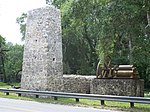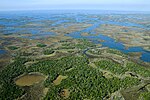Ozello, Florida
Central Florida geography stubsPopulated coastal places in Florida on the Gulf of MexicoUnincorporated communities in Citrus County, FloridaUnincorporated communities in FloridaUse mdy dates from July 2023
Ozello is an unincorporated community in Citrus County, Florida, United States, located between Crystal River and Homosassa on the state's west coast.The population in 1900 was 49; in 1890, it was zero.Ozello consists of several keys which are connected by The Ozello Trail (C.R. 494) a twisting roadway that has several sharp curves running west off of U.S. 19-98. The trail is very popular with motorcyclists, and features a great deal of wildlife scenery.
Excerpt from the Wikipedia article Ozello, Florida (License: CC BY-SA 3.0, Authors).Ozello, Florida
South John Brown Drive,
Geographical coordinates (GPS) Address Nearby Places Show on map
Geographical coordinates (GPS)
| Latitude | Longitude |
|---|---|
| N 28.825833333333 ° | E -82.656944444444 ° |
Address
South John Brown Drive 2533
34429
Florida, United States
Open on Google Maps










